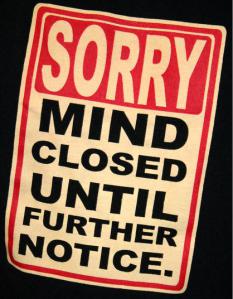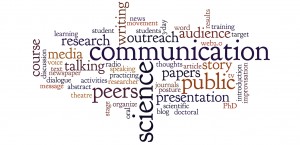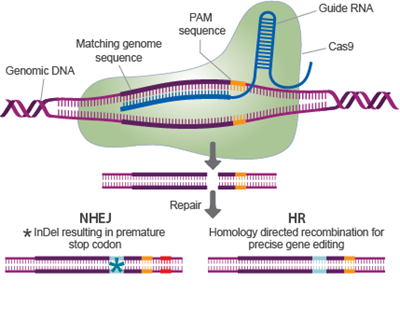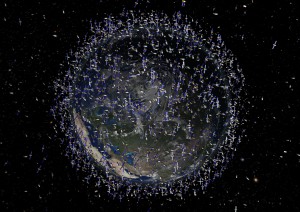Oct
12
2015
 One of the hallmarks of pseudoscience is that it works backwards – typically those engaging in pseudoscience begin with a conclusion and then work backwards to fill in the evidence and logic. People are generally very good at this type of process, which is often referred to as rationalization.
One of the hallmarks of pseudoscience is that it works backwards – typically those engaging in pseudoscience begin with a conclusion and then work backwards to fill in the evidence and logic. People are generally very good at this type of process, which is often referred to as rationalization.
There are several specific components to the pseudoscientific process. In order to find positive evidence for the desired conclusion, the rationalizer will cherry pick evidence. This allows them to quote studies and scientists to make it seem like their conclusions are based on science.
In order to refute any evidence against their conclusion, they will simply find fault with any inconvenient evidence. Here I find a range of sophistication. At the complex end of the spectrum, usually those with some science background, specific weaknesses of studies can be pointed out. No study is perfect, so if you want to find fault with a study you can. It is always necessary to put any criticisms into context – are these fatal flaws, or minor quibbles. This requires judgement, and it is precisely judgement that is skewed in the pseudoscientific process.
Continue Reading »
Oct
09
2015
 An editorial in Nature Biotechnology titled, Standing Up for Science, takes direct aim at the problem of science communication in our society. (It’s a short article – read it.) It’s a wonderful editorial, and I completely agree with it. This should not come as a surprise to any regular readers here.
An editorial in Nature Biotechnology titled, Standing Up for Science, takes direct aim at the problem of science communication in our society. (It’s a short article – read it.) It’s a wonderful editorial, and I completely agree with it. This should not come as a surprise to any regular readers here.
The article focuses on the recent events involving US Right to Know using Freedom of Information Act (FOIA) requests to essentially harass public scientists and troll through their e-mails so that they can take lines out of context and use it for anti-GMO propaganda. This effort was funded in part by a $47,500 donation from the Organic Consumers Association. The irony of this was apparently completely lost on USRTK.
The main target (so far, this affair is likely not over) was Kevin Folta, a gifted and dedicated science communicator (he has been a guest on the SGU a couple of times and was a speaker at NECSS). The “smoking gun” revealed by USRTK was that Monsanto had donated $25,000 (that’s $22,500 less than USRTK got from Big Organic) to Kevin’s University for public outreach, funds which he used to pay for gas money and snacks when he traveled for public speaking engagements. As Nature points out:
Folta broke no laws. The Monsanto funds were a donation to his university’s Foundation outreach program. They were tied neither to him directly nor to his research. His conflict of interest disclosures were wholly compliant with his university’s rules. He never used industry funds for personal gain.
Continue Reading »
Oct
08
2015

Anyone with a child in school is probably aware of the need for peanut free zones. You get a notice when your child returns from school on the first day stating that at least one child in their class has a peanut allergy, which means nothing with peanuts gets sent to school for your child’s lunch. If you are a parent of a child with a peanut allergy you understand how important and serious this is – your child is literally one errant Snickers bar away from death.
The general consensus is that food allergies have been on the rise in developed countries, although studies show a wide range of estimates based upon study techniques. A US review found the prevalence of self-reported peanut allergies ranged from 0-2%. A European review found the average estimate to be 2.2% – around 2% is usually the figure quoted. In a direct challenge study, at age 4, 1.1% of the 1218 children were sensitized to peanuts, and 0.5% had had an allergic reaction to peanuts. That means there are millions of people with peanut allergies.
So far there is no cure for the allergies themselves. Acute attacks can be treated with epinephrine, but there are cases of children dying (through anaphylaxis) even after multiple shots. The only real treatment is to obsessively avoid contact with the food in question. Peanuts, tree nuts, and shellfish are the foods most likely to cause anaphylaxis.
Continue Reading »
Oct
06
2015

Because it’s bogus.
It’s unfortunate that it’s so easy to convince many people that there is a vast medical conspiracy, and that a few brave mavericks are willing to bring you “the truth.” I was recently asked to look at this website, claiming that doctors who treat diabetes have all been lying to their patients and the world. They promise to reveal the secret of curing diabetes, but the long video, and the endless website, is all just one long commercial hyping their book which you can get for the “bargain basement reduced price of just $77 for the digital copy or $94.39 for the paperback copy with free worldwide shipping.”
The sales pitch is framed as an “Urgent diabetes health bulletin from the doctors at the International Council for Truth in Medicine.” (Quackwatch lists the ICTM as a “questionable organization.”) To backup their authority they claim they are in partnership with “Natural News.” Given that Natural News is, in my opinion, the most notorious crank, conspiracy mongering, health misinformation site on the web, that is all you need to know about the ICTM to make an informed judgement.
Their narrative is depressingly typical, and not even imaginative. The tropes are so common they are worth addressing in detail.
Continue Reading »
Oct
05
2015
 There is a general consensus that people overall do not have a good intuitive grasp of statistics. In addition, there are multiple biases filtering our perception and memory. Therefore we tend to engage in a biased evaluation of biased data. The entire gambling industry depends on this fact.
There is a general consensus that people overall do not have a good intuitive grasp of statistics. In addition, there are multiple biases filtering our perception and memory. Therefore we tend to engage in a biased evaluation of biased data. The entire gambling industry depends on this fact.
As an example, consider the famous Monty Hall problem. In the classic game show, Let’s Make a Deal, the host Monty Hall would often show three doors to the contestant. In this problem Monty Hall says that behind two of the doors there are goats and behind one there is a new car. The contestant chooses one of the three doors. Monty (who knows where the car is) then opens one of the doors the contestant did not choose to reveal one of the two goats. He then offers the contestant the opportunity to change their pick to the other remaining door. Should they switch?
The answer is unequivocally yes. Yet many people have a very difficult time grasping the statistics behind the explanation. In fact, statistics can be so counter-intuitive that the world’s psychology researchers may in fact perpetuate an error for thirty years before someone realizes it. That is what two researchers (Miller and Sanjurjo) are now claiming.
Continue Reading »
Oct
02
2015
 We have been putting stuff into orbit around the Earth, especially low-Earth orbit, for the last 58 years. Space is a big place, so no one probably worried at first that we would start junking it up, but that is exactly what has happened in this short span of time. This is now a serious issue we have to confront.
We have been putting stuff into orbit around the Earth, especially low-Earth orbit, for the last 58 years. Space is a big place, so no one probably worried at first that we would start junking it up, but that is exactly what has happened in this short span of time. This is now a serious issue we have to confront.
It’s disappointing, and I hate having one more thing to worry about, but Earth orbit has become so cluttered with debris that it poses a serious risk to our assets in space. Recently former NASA scientist Donald Kessler said in an interview:
“We’re at what we call a ‘critical density’ — where there are enough large objects in space that they will collide with one another and create small debris faster than it can be removed.”
NASA scientists also fear a scenario similar to that portrayed in the movie, Gravity. There were some scientific problems with the movie, but the core idea is valid – there is so much debris in orbit that a collision of two large objects can start a chain-reaction, they will scatter debris which will collide with other objects causing more debris.
Continue Reading »
Oct
01
2015
 If I had to choose the one thing that has most transformed human civilization it is science. Prior to this remarkable invention history was characterized by conflicting ideologies, philosophies, superstitions, and religions.
If I had to choose the one thing that has most transformed human civilization it is science. Prior to this remarkable invention history was characterized by conflicting ideologies, philosophies, superstitions, and religions.
Some practical knowledge managed to move forward, including various technologies and even enlightenment philosophy, but our attempts to understand and manipulate the world were burdened with magical thinking. Science set us on a new track, and in the last few centuries we have systematically replaced our old traditional thinking about the world with scientific thinking.
A thousand years ago European physicians attempted to understand and treat illness by manipulating the four humors while their eastern counterparts were faring no better with an astrology-based system of blood letting. If we wanted to anticipate future events, an astrologer would consult fanciful charts that have no actual influence on reality. If we wanted to make our lives better, ensure a good harvest, or survive a plague we would pray to imaginary powerful beings.
Continue Reading »
 One of the hallmarks of pseudoscience is that it works backwards – typically those engaging in pseudoscience begin with a conclusion and then work backwards to fill in the evidence and logic. People are generally very good at this type of process, which is often referred to as rationalization.
One of the hallmarks of pseudoscience is that it works backwards – typically those engaging in pseudoscience begin with a conclusion and then work backwards to fill in the evidence and logic. People are generally very good at this type of process, which is often referred to as rationalization.











